
The recent rise of information warfare (IW) has generated a number of misconceptions. Perhaps the most dangerous is the notion that IW is merely something we need to guard ourselves against. Not so. Like it or not, information warfare is here to stay, which means we have a moral obligation to protect ourselves by confronting it head-on. We may not have started this fight, but it is here and now we must wage it.
That doesn't mean we should be cooking up disinformation and peddling false propaganda elsewhere. Far from it. However, it does mean we should be rooting out malign influence wherever we find it. For starters, we should be seeking out the networks and troll farms that are creating havoc here stateside. But, admittedly, that's an enormous task. There are literally thousands of influencers around the globe, and they're constantly switching platforms, changing usernames, and widening their audience. So how exactly are we supposed to get a handle on it?
Thankfully, technology is coming to the rescue. New software for addressing the problems of information warfare is rolling out on a regular basis. EdgeTheory's platform is a case in point. Designed to aid in the uncovering of of disinformation and malign networks, it is a customizable system that tracks thousands of entities worldwide, be they publications, social media handles, or even online forums. Think of EdgeTheory as the the battle station for information warfare. We offer a variety of tools and settings that make the work of an analyst considerably easier. Here are 12 of the most essential of them.
Atomic content is the fuel that fires EdgeTheory's engines. It is the basic element upon which all subsequent analysis depends.
Atomizing - or breaking apart - malign narratives makes it possible to identify those elements that are most common in a given campaign. For an analyst, though, this used to mean days and days' worth of comparing, cross checking, and verifying. EdgeTheory's interface, however, can handle it in a few short seconds. The atomic elements - the key terms and phrases that constitute a campaign - are easily recognized, making it possible to keep closer track of disinformation as it evolves and expands.The data can subsequently be configured into easily readable displays that lend themselves to speedier analysis.
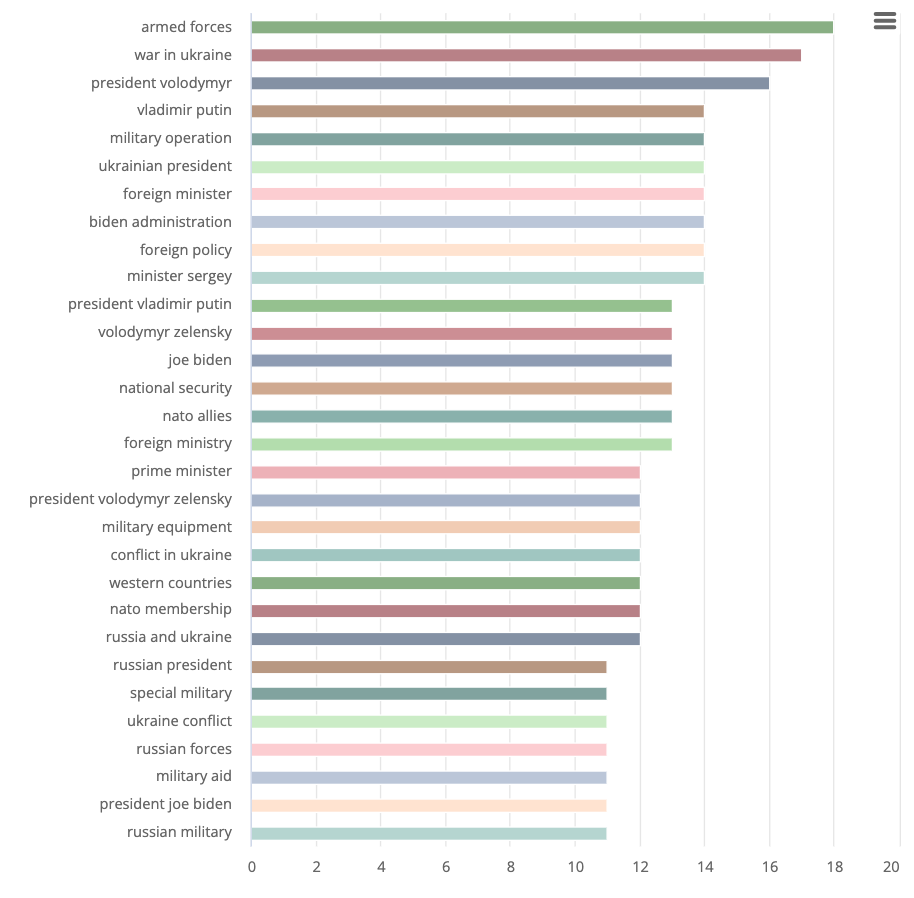
The waging of information warfare requires the ability to rapidly identify narrative themes and topics. The longer a malign narrative goes unnoticed, the more damage it incurs.
Our suite of AI tools offer a number of interfaces for addressing this concern. Our system measures every captured piece of content, identifying key phrases and terminology. It then compiles all of this data into easily readable displays that measure narrative trends across a broad swathe of publications and social platforms. Analysts can use this data to identify the most relevant themes and topics, enabling them to ferret out malign narratives more rapidly.
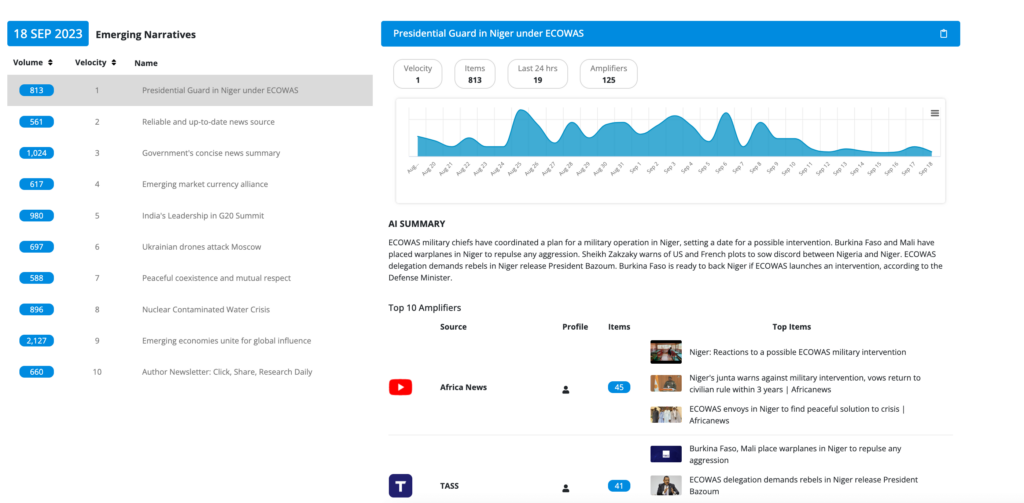
Weaponized narratives rarely appear suddenly overnight. Instead, they evolve over time, changing gradually to accommodate new developments. The practice of narrative tracing allows an analyst to follow a narrative backwards, to chart its evolution across time.
EdgeTheory offers this capacity as well, making it easier for information warfare specialists to better comprehend how specific events have shaped a given narrative. Our Narrative Tracing tool yields a dynamic display in which pieces of content are grouped by degree of similarity. The more words and phrases different pieces of content have in common, the more likely they are to have been coordinated. With Narrative Tracing, users gain access to an AI-driven tool that analyzes content thematically, offering a streamline display of correlation among narratives.
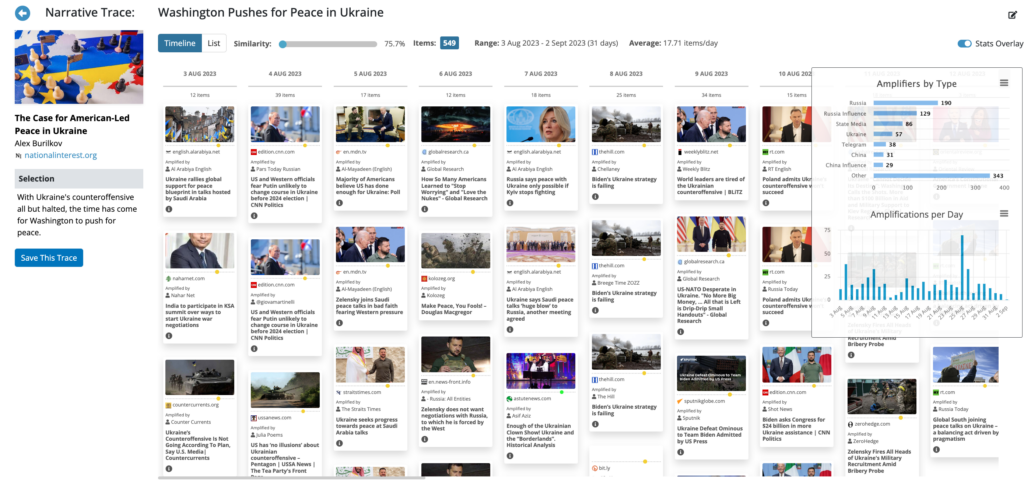
If Narrative Tracing makes it possible to identify coordinated networks, our monitoring tool enables their constant surveillance. Once identified, sources can be tagged to specific networks, with all published materials appearing in a specialized folder system that provides operators with easy access. The days of trawling around the Internet for coordinated messaging are now at an end. With EdgeTheory, keeping tabs on malign networks can be done in a few short clicks.

Without constant vigilance, it's impossible to stay on top of developing narratives. In the past, this meant hopping from website to website, hoping to uncover weaponized content. Now, this can all be accomplished from a single console. In fact, our system is equipped to capture content regardless of how it is published. Be it an RSS feed, a twitter account, a YouTube stream, or even a specific subreddit, EdgeTheory has the ability to pull and scrape designated materials, making source monitoring more streamlined than ever.
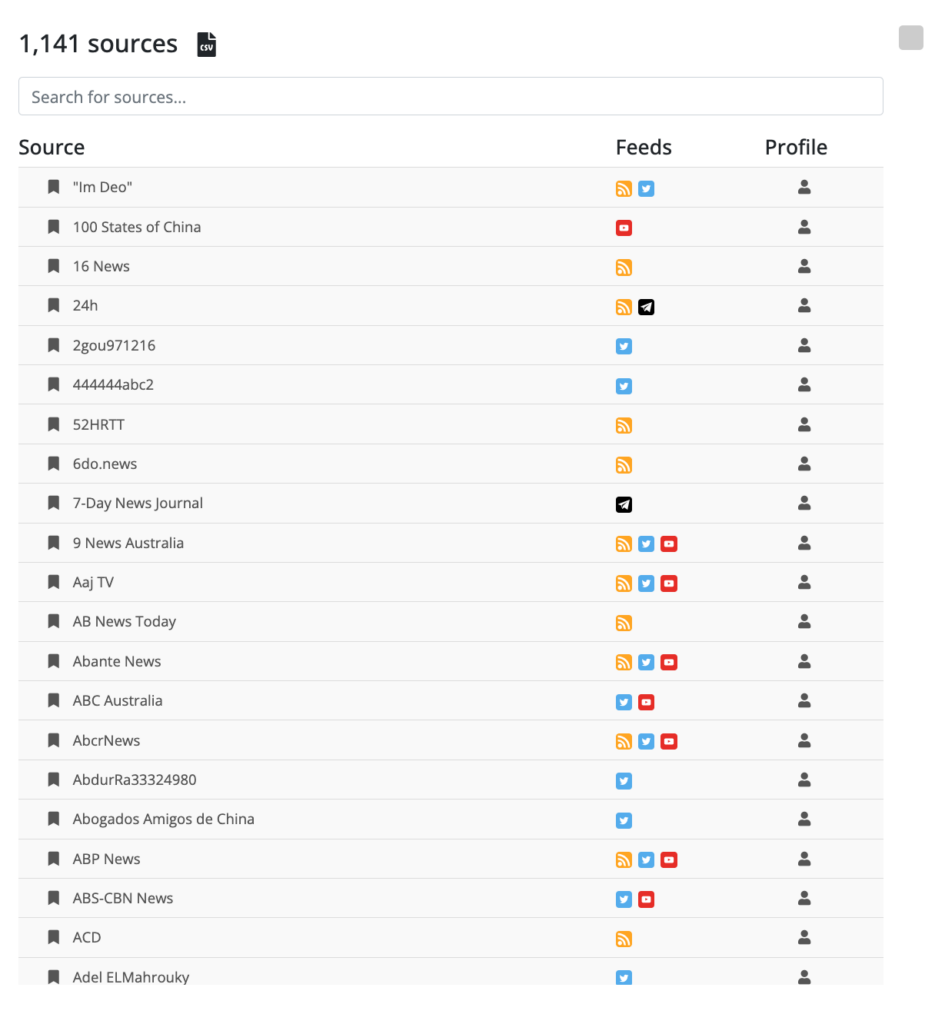
The mass proliferation of malign narratives makes it difficult to keep track of them all. We provide a solution to that problem, as well. It's called bookmarking.
With bookmarking any item can be permanently saved to a designated virtual folder, facilitating easy retrieval later on. Simply select the bookmark icon on any piece of content and send it to the folder of your choosing. In this way, the item stays in a "saved" mode, remaining in place until needed for further reference.

When a malign narrative is reproduced in several thousand pieces of content, it becomes impossible to read them all. Yet, without examining each one, how is an analyst to make sense of what is being said, let alone determine how it is shaped and altered for specific audiences?
Again, There's a solution. This time it takes the form of an AI recap. EdgeTheory's AI "reads" every piece of incoming content, identifying similarities while parsing out differences. Operators who use this tool are given an AI-generated recap that summarizes thousands of articles in a few short paragraphs, enabling analysts to grasp the broad picture without getting lost in all the minutiae.
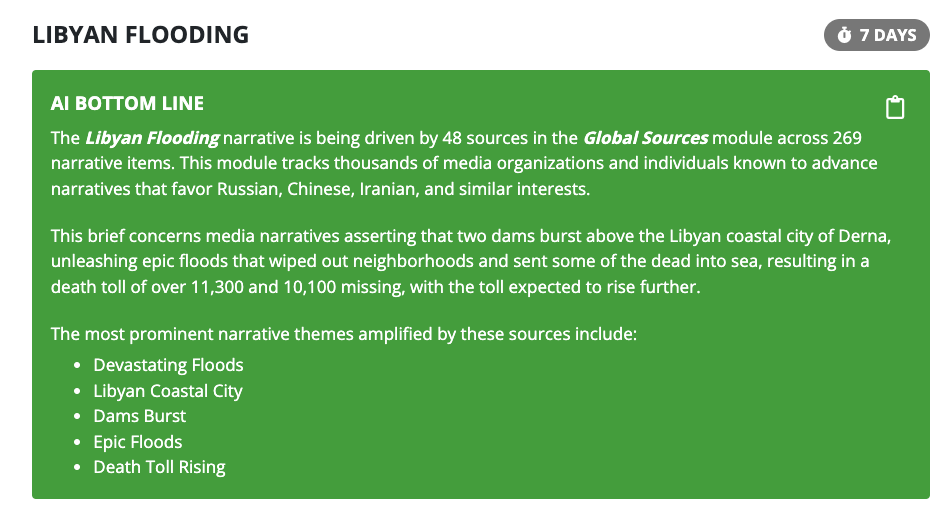
It isn't enough to know simply who is generating disinformation. It's also important to understand who is amplifying it. After all, ferreting out this information is critical to piecing together malign networks.
Our tracker tallies amplifications across social media platforms, as well as other forms of republication. Users even have access to a timeline that displays the precise moment of amplification, as well as who is doing it. Using this tool makes it possible to track the diffusion of narratives over a given period, enabling operators to identify key influencers and modes of dissemination.
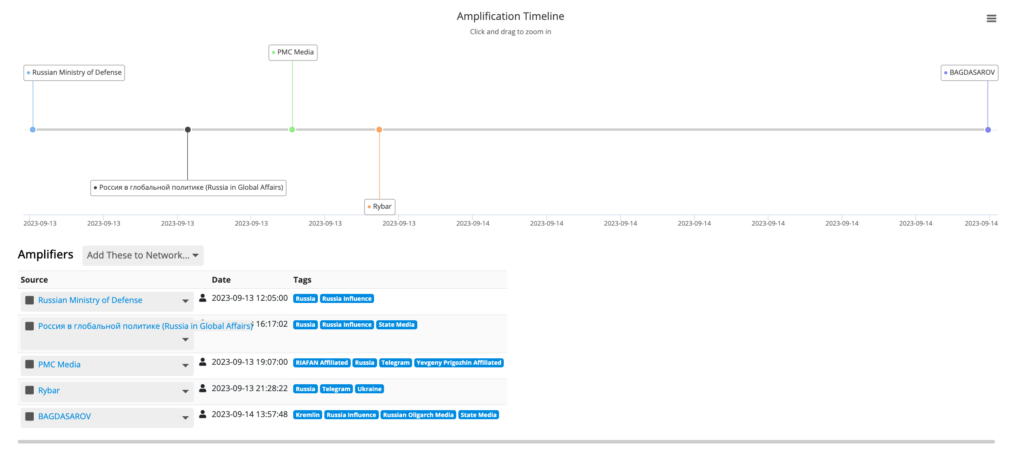
Coordinated networks are easier to comprehend when presented visually. Our specialized mapping tool offers a pictorial view of amplifications between sources, permitting analysts to visualize relationships between different actors. Additionally, this mapping allows for the identification of potential coordinated disinformation campaigns. And because the data fed into the map is cumulative, it also allows operators to uncover previously unidentified affiliations.
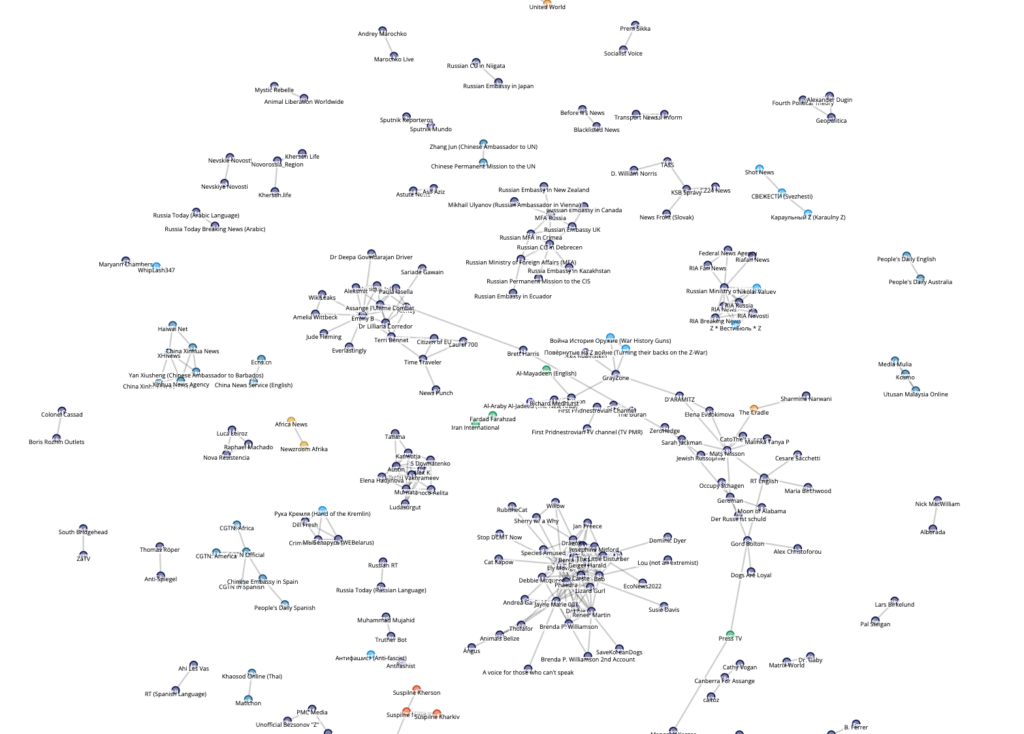
Disinformation does not simply appear out of nowhere. Rather, it is driven by headlines and events around the globe. Our World Events timeline helps analysts correlate narratives with specific events. Found in each and every EdgeTheory brief, the timeline reveals a list of relevant headlines. In essence, analysts are given the ability to track the manner in which global headlines influence malign narratives.
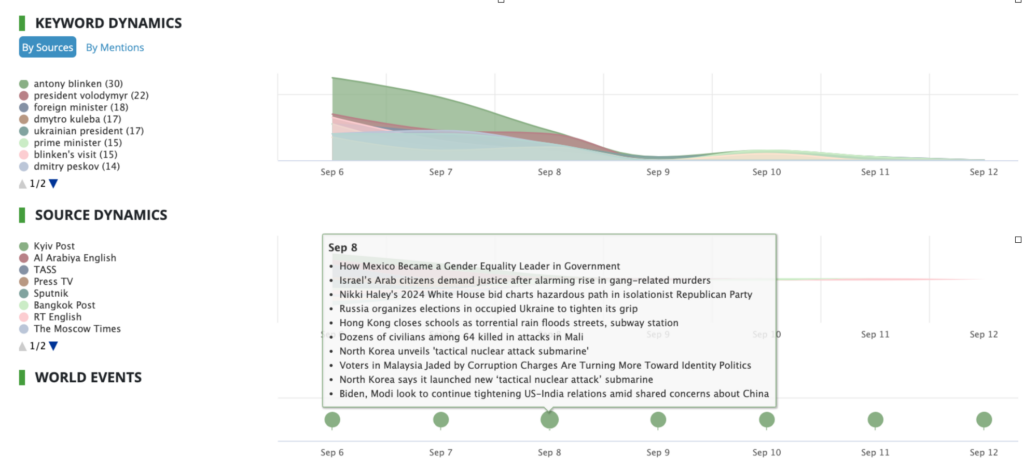
Information readiness requires the ability to spot emerging narratives before they become mainstream. With our Trend Analysis tool, it is possible to stay at the forefront of narrative evolution. These simple tools offer an overview of new trends, accelerating trends, and even trends that are dropping from use. With a single glance, it is possible to understand which narratives are being developed, which are gaining momentum, and which are being retired.
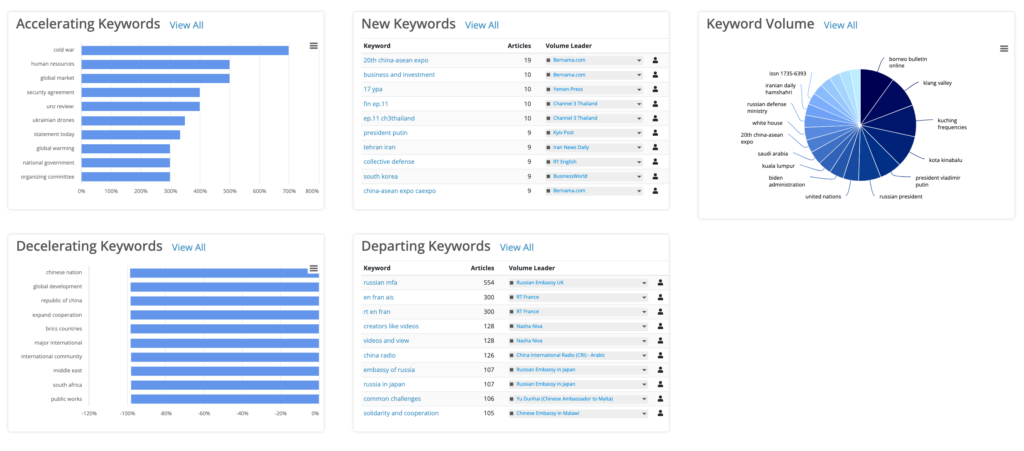
Finally, EdgeTheory offers analysts the ability to classify sources using customized tags. With these tagging tools, it is possible to cluster publications and social handles together into networks.
At the same time, we also give you a robust display of each sources's metadata. Indeed, much can be learned about a source's publication behavior by simply viewing a few specialized charts. These automated graphs feature keyword measurement for each specific source, detailing frequency and volume both by chronology and percentage of overall content.
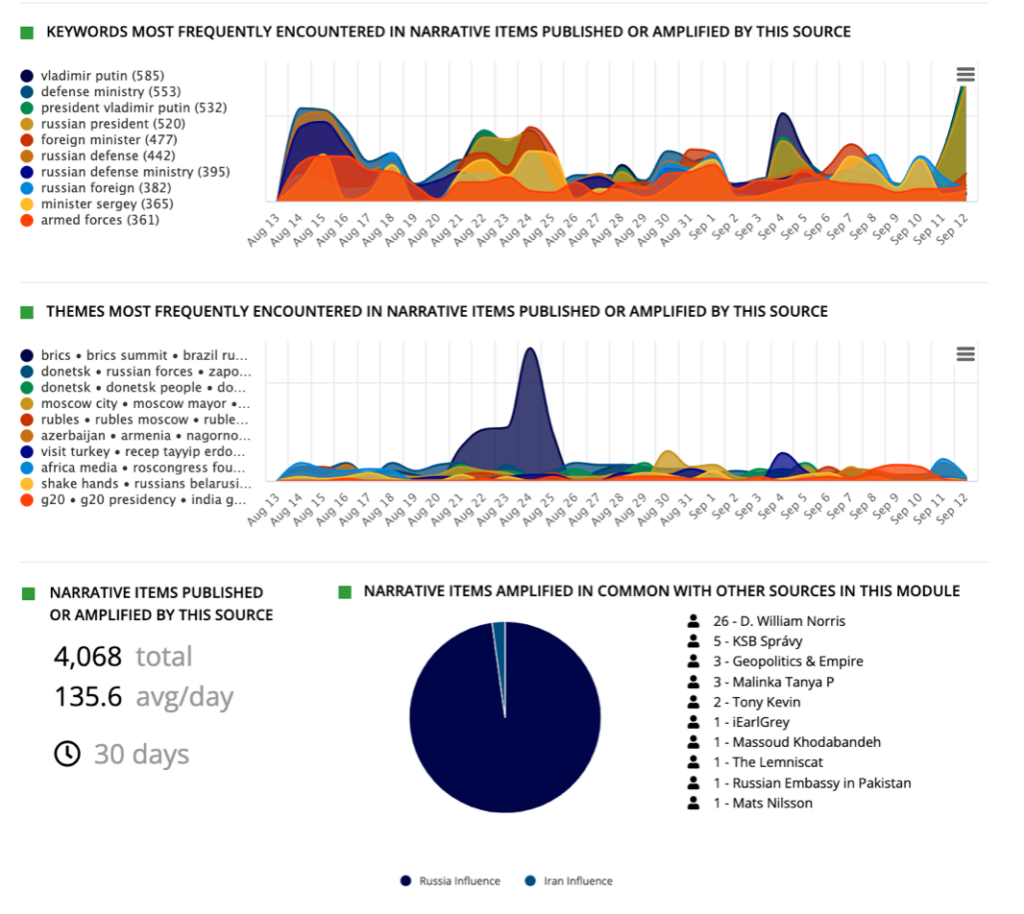
If technology has made us susceptible to disinformation and malign manipulation, it is also providing the tools by which we can confront the enemy head-on. EdgeTheory is at the forefront of this development effort, offering a state-of-the-art tool for combatting weaponized narratives. What is more, anyone can use our interface - any company, individual, or organization. The tools and settings featured here are only a small part of what we can provide. Why not get in touch with us and give it a test drive for yourself?